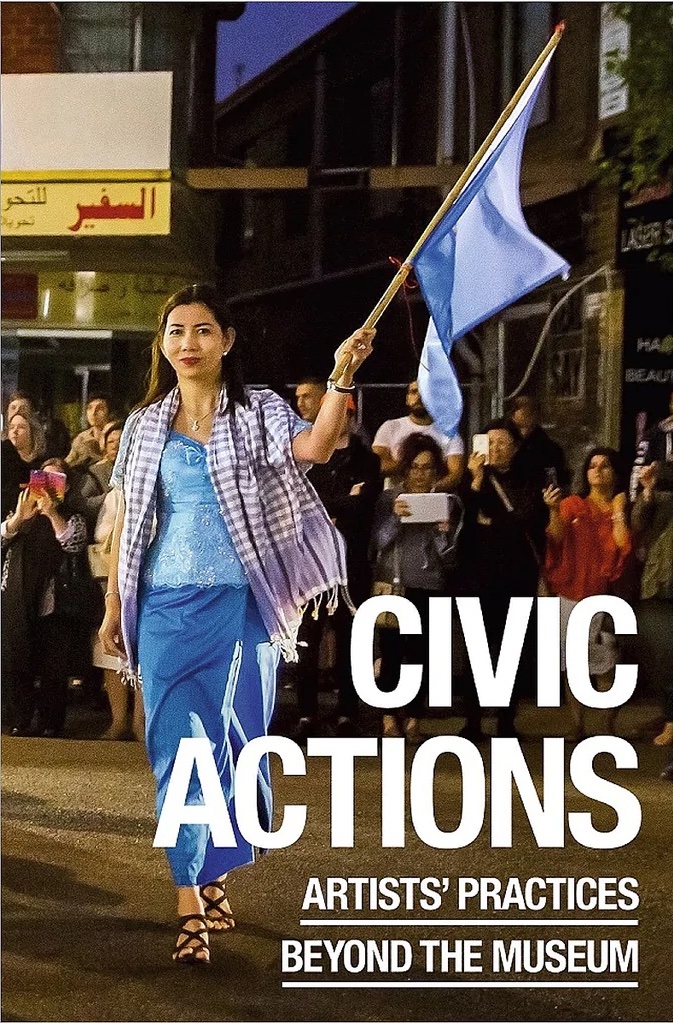BLINDSPOTS: THE UNHAPPY PUBLIC IN PUBLIC ART
Publication — 2017
Book chapter by Amy Spiers.
Published in the book Civic Actions: Artists’ Practices Beyond the Museum, edited by Blair French and Anne Loxley and published by Museum of Contemporary Art Australia, 2017.
Book chapter by Amy Spiers.
Published in the book Civic Actions: Artists’ Practices Beyond the Museum, edited by Blair French and Anne Loxley and published by Museum of Contemporary Art Australia, 2017.

There is often a largely unquestioned assumption in public art circles that generating good feelings is measurable proof that a project was successful. If the audience has been made happy, then the project is often assessed as good. If the public are content after participating in an art project, then it is deemed that the work has engaged them in the right way. In this book chapter I problematise these assumptions. In recent decades, theorists of emotions and affect, such as Sara Ahmed, Lauren Berlant, Ann Cvetkovich, Jack Halberstam, have urged a reconsideration of negative feelings – like depression, failure, shame, unhappiness and rage – in order to understand their enabling and galvanising effects for political engagement and community formation. This critical discourse contests the assumption that ‘good politics can only emerge from good feelings’ and contends that living better entails ‘embracing rather than glossing over bad feelings’. Informed by this work, I want to challenge the attachment to good feelings in public, participatory and socially engaged art which leads to a tendency to overlook the generative capacity of discontent. By drawing on the work of Ahmed specifically, I aim to expose the unhappy effects of happiness and to think about what gets ‘hidden, displaced or negated under public signs of joy’. I do this by looking at two artworks that were discussed at the ‘Civic Actions’ conference, Suzanne Lacy’s Between the Door and the Street (2013) and Michael Sailstorfer’s Folkestone Digs (2014), which offer useful case studies for discussing the wider phenomenon of glossing over the bad feelings stirred by public art.
This essay is published in the book Civic Actions: Artists’ Practices Beyond the Museum, edited by Blair French and Anne Loxley and published by Museum of Contemporary Art Australia, 2017.
Further information
︎ Civic Actions, Museum of Contemporary Art Australia
︎ Spiers, A. "Blindspots: The Unhappy Public in Public Art." Civic Actions: Artists’ Practices Beyond the Museum, edited by Anne Loxley and Blair French, 136-49: Museum of Contemporary Art Australia, 2017